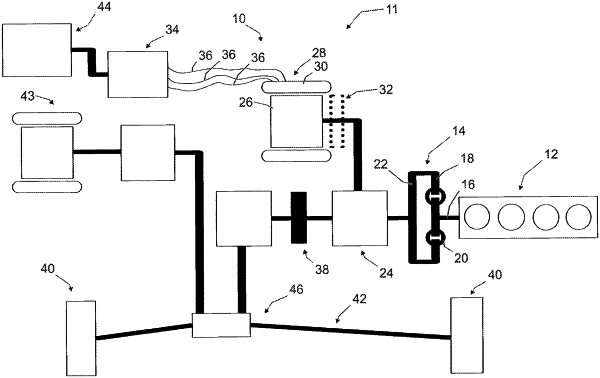| CPC F16F 15/002 (2013.01) [F02N 11/0859 (2013.01); F16F 15/145 (2013.01); F16F 15/26 (2013.01); H02P 6/18 (2013.01); H02P 7/03 (2016.02); B60K 2006/268 (2013.01); B60Y 2400/48 (2013.01)] | 8 Claims |

|
1. A torque transfer device, for a powertrain of a motor vehicle, comprising:
an electric motor having a stator and a rotor rotatable relative thereto,
a control system configured to output a current pulse to the electric motor, wherein the current pulse effects a rotary motion of the rotor in a first direction of rotation and through a first angle of rotation and thus effects an induced voltage, which is received by the control system and by which the control system determines the direction of rotation or the rotary position of the rotor in relation to the stator,
wherein the rotor is connected to a torsional vibration damper comprising a damper input and a damper output, wherein the damper output is rotatable in a limited manner in relation to the damper input, against an effect of energy storage elements, and the rotary motion of the rotor brings about a relative rotation between the damper input and damper output,
wherein the rotor is connected to the damper output and the rotary motion of the rotor causes a rotary motion of the damper output through a second angle of rotation, and
wherein the rotary motion of the rotor causes a rotary motion of the damper input through a third angle of rotation which is smaller than the first or second angle of rotation.
|